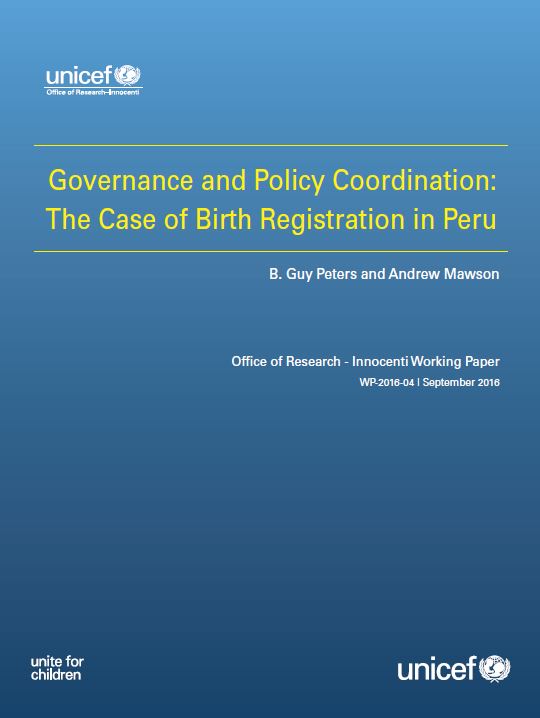This research, the second of two case studies, explores coordination through the lens of civil registration and vital statistics, with particular reference to birth registration in Peru. It focuses on the role that coordination can play in making birth registration function effectively. While the capacity of governments to deliver the function of birth registration is central to this paper, the role that understanding coordination can play in improving public services is examined, especially services for children. The capacity to register the births of children is a long-standing function of governments, and can be seen as a test of government effectiveness. In Peru, backward mapping showed that the trails from local and district registrars to the government registration organization (RENIEC) stopped almost immediately. This seems to point towards the centralized structure and top-down approach of RENIEC; to sustain its achievements to date and to reach the final three per cent of unregistered births it should consider incentivizing and empowering local and community administrations.


